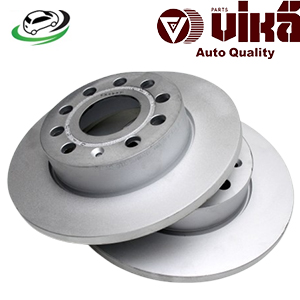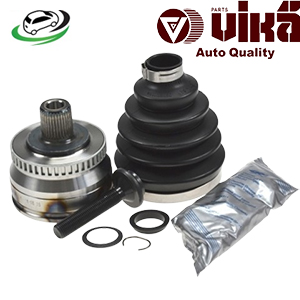-14%
Get Rear Lid Gas Filled Strut VW Golf 2.0T/Golf V 2.5/Golf V TDI/R32 MKV 3.2 1K6827550F
A hatch strut, also known as a gas strut, lift support, or gas spring, is an indispensable component in vehicles equipped with hatchbacks, liftgates, or tailgates. These devices provide the necessary support and force to assist in the opening, holding, and closing of heavy vehicle hatches. Understanding the role, functionality, types, and maintenance of hatch struts can help vehicle owners appreciate their significance and ensure the longevity of these components.
Functionality and Mechanism
The primary function of a hatch strut is to counterbalance the weight of the hatch, making it easier to lift and hold open. When a driver or passenger opens the hatch, the strut extends, and the pressurized gas within the strut provides a lifting force. This force counteracts the weight of the hatch, allowing it to open smoothly and remain in an open position without additional support. Closing the hatch compresses the strut, and the gas pressure assists in gently lowering the hatch to a closed position.
Hatch struts typically consist of a cylinder filled with compressed gas, usually nitrogen, and a piston rod that moves in and out of the cylinder. The gas pressure inside the cylinder creates a pushing force on the piston rod, which extends the strut when the hatch is opened. The piston rod is attached to the vehicle body at one end and the hatch at the other, allowing the strut to pivot and extend as the hatch moves.
Types of Hatch Struts
Hatch struts come in various types, each designed to meet specific requirements and applications. The most common types include:
- Standard Gas Struts: These are the most prevalent type of hatch struts, using compressed gas to provide lifting and holding force. They are suitable for most hatchback and tailgate applications.
- Dampened Gas Struts: These struts include an additional damping mechanism that controls the speed of the hatch movement, providing a smoother and more controlled opening and closing action. This type is ideal for heavier hatches or where a gentle movement is preferred.
- Adjustable Gas Struts: These struts allow for adjustments in the pressure and force they provide, enabling customization based on the weight of the hatch and user preference. They are versatile and can be tailored to specific needs.
- Lockable Gas Struts: Equipped with a locking mechanism, these struts can hold the hatch in various positions. This feature is useful for applications where the hatch needs to be secured at different angles or partially open positions.
Benefits of a hatch strut
1. Ease of Use
Smooth Operation: Hatch struts make opening and closing the hatch effortless. The gas pressure within the strut provides a lifting force that counterbalances the weight of the hatch, allowing users to open and close it with minimal effort.
Hands-Free Operation: Many modern hatch struts are designed to support hands-free operation. This means that once the hatch is lifted slightly, the strut takes over and opens the hatch fully, which is particularly useful when hands are full.
2. Safety Enhancement
Prevents Sudden Closures: Hatch struts are designed to hold the hatch in an open position securely. This prevents the hatch from suddenly closing, which can cause injuries or damage to the vehicle and its contents.
Controlled Movement: Struts with damping mechanisms provide a controlled and gentle movement, preventing the hatch from slamming shut. This feature is especially important for preventing injuries to hands and fingers.
3. Improved Convenience
Accessibility: Hatch struts improve accessibility to the vehicle’s cargo area. They hold the hatch open at a convenient height, making it easier to load and unload items without having to manually hold the hatch.
Partial Opening: Some struts are designed to hold the hatch at different angles, allowing partial opening. This is useful in tight spaces where fully opening the hatch might not be possible.
4. Durability and Longevity
Reduced Wear and Tear: By providing support and reducing the effort needed to open and close the hatch, struts help reduce wear and tear on the hinges and latch mechanism of the hatch, extending their lifespan.
Weather Resistance: High-quality hatch struts are made from durable materials like stainless steel and aluminum, which are resistant to corrosion and can withstand harsh weather conditions, ensuring long-term reliability.
5. Enhanced Vehicle Value
Aesthetic Appeal: Properly functioning hatch struts contribute to the overall aesthetic appeal of the vehicle. A hatch that opens and closes smoothly and securely can leave a positive impression on users and potential buyers.
Maintained Functionality: Vehicles with well-maintained hatch struts retain their functionality over time, which can be a selling point if the vehicle is ever put on the market.
6. Customization and Versatility
Adjustable Struts: Some hatch struts are adjustable, allowing users to customize the force and resistance based on their preferences and the weight of the hatch. This customization ensures optimal performance for different applications.
Specialized Struts: Various types of hatch struts are available for specialized applications, such as lockable struts for securing the hatch in multiple positions or dampened struts for controlled movement.
7. Cost-Effective Maintenance
Easy Replacement: Hatch struts are relatively easy to replace, often requiring only basic tools. This makes maintenance cost-effective and accessible for most vehicle owners.
Prolonged Component Life: Regular maintenance and timely replacement of hatch struts can prevent damage to other components, reducing the need for costly repairs and extending the overall life of the vehicle’s hatch system.
8. Versatility Beyond Vehicles
Non-Automotive Applications: While commonly associated with vehicles, hatch struts are also used in a variety of other applications such as in cabinets, toolboxes, and industrial equipment. Their ability to provide controlled lifting and holding makes them valuable in many settings.
Enhanced Usability: In non-automotive applications, hatch struts improve the usability of heavy lids and doors, ensuring they remain open during use and close gently when not needed.
Maintenance and Replacement
Regular maintenance of hatch struts is crucial to ensure their optimal performance and longevity. Key maintenance practices include:
- Inspection: Regularly inspect the struts for signs of wear, damage, or leakage. Look for oil or gas leakage, which indicates a compromised seal.
- Cleaning: Keep the struts clean and free from dirt and debris. Use a soft cloth to wipe the piston rod and cylinder, avoiding abrasive materials that could damage the surfaces.
- Lubrication: Some hatch struts may benefit from occasional lubrication of the pivot points to ensure smooth movement. Use a lubricant recommended by the manufacturer.
- Replacement: Over time, hatch struts may lose their effectiveness due to gas leakage or wear. If the hatch no longer stays open or requires excessive force to lift, it is time to replace the struts. Always replace struts in pairs to ensure balanced performance.
Signs of a worn out hatch strut
1. Hatch Fails to Stay Open
One of the most obvious signs of a worn-out hatch strut is when the hatch fails to stay open. If the hatch starts to slowly drift downward or suddenly falls shut after being opened, the strut is likely losing its ability to hold the hatch in place.
2. Difficulty in Opening the Hatch
When hatch struts are in good condition, they assist in lifting the hatch, making it easy to open with minimal effort. If you find that opening the hatch requires significantly more force than usual, it could indicate that the struts are losing their effectiveness and need replacement.
3. Noisy Operation
Worn-out hatch struts can produce unusual noises during operation. Squeaking, grinding, or hissing sounds when opening or closing the hatch are signs that the internal components of the strut, such as seals or gas, are compromised.
4. Uneven or Jerky Movement
A healthy hatch strut ensures smooth and controlled movement of the hatch. If the hatch moves unevenly, jerks, or stops at certain points during opening or closing, the strut may be failing to provide the necessary support and damping.
5. Visible Damage or Wear
Inspecting the hatch struts for visible damage can also help identify wear. Look for signs such as:
- Corrosion or Rust: Rust on the strut’s surface can indicate exposure to moisture and potential internal damage.
- Leaking Fluid: Oil or gas leakage around the seals or piston rod suggests that the strut is no longer airtight and is losing its effectiveness.
- Bent or Damaged Rod: A bent or damaged piston rod can impair the functionality of the strut and should be replaced immediately.
6. Reduced Lifespan
If the hatch struts are relatively new but show signs of wear or failure, it could indicate a quality issue or improper usage. Struts should generally last several years under normal conditions, so premature wear may suggest the need for better-quality replacements.
7. Inconsistent Performance
Inconsistent performance, where the hatch sometimes stays open and other times falls shut, indicates that the gas pressure inside the strut is fluctuating. This inconsistency can be dangerous and inconvenient, necessitating replacement.
8. Physical Effort to Hold the Hatch Open
If you find yourself needing to manually hold the hatch open or prop it up with an object, it’s a clear sign that the hatch struts are no longer providing the necessary support. This is not only inconvenient but also poses a safety risk.
9. Vibration or Shaking
If the hatch vibrates or shakes while driving, especially on uneven roads, it could indicate that the hatch struts are not securing the hatch firmly in place. This can lead to further damage and noise.
10. Environmental Exposure
Frequent exposure to extreme temperatures, moisture, and corrosive environments can accelerate the wear of hatch struts. If your vehicle is regularly exposed to such conditions, the hatch struts may wear out faster and require more frequent inspection and replacement.
Follow us on Facebook for more parts.



